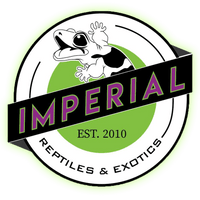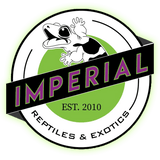Chuckwalla a.k.a Sauromalus obesus

Intro to the Chuckwalla
The Chuckwalla is a beautiful lizard species found in the southwestern region of the United States. Adults can reach overall lengths of 15 inches, second in size only to the Gila Monster. Chuckwallas have a distinct appearance characterized by loose skin folds along their neck and sides, as well as a broad tail with a blunt tip. With their rough granular skin, chuckwallas can grip rock crevices effectively. When threatened, they inflate their bodies by ingesting air, enabling them to maintain a tighter grip within the crevice.

Chuckwalla Care
Taking care of chuckwallas in captivity can be challenging and they are not recommended for beginner hobbyists. Working with juvenile individuals is recommended as they adapt more readily to captivity compared to adults. To house a juvenile chuckwalla, a minimum enclosure size 36x18x18 (LxWxH) inches is recommended. Adult chuckwallas will need even larger enclosures, a 4x2x2 feet is the minimum requirement for 1 adult. It's important to avoid housing males together, but a pair of females can be kept with an adult male. When housing them in groups, ensure there is enough living space for the females to establish their territories, with a minimum of 6 feet of cage space. Chuckwallas are rock dwellers, so providing rock shelves for basking and creating crevices for hiding is essential. Full-spectrum 10-16% UVB is crucial to prevent metabolic bone disease. Common substrate options include crushed walnut, zoomed reptisand (NOT CALCIUM SAND), or a dry cypress blend with play sand. Due to the weight of the substrate and furniture, the enclosure's flooring needs to be strong and secure. Maintaining appropriate temperatures within the enclosure is vital. Daytime temperatures should range between 88 and 95 degrees Fahrenheit, with a basking spot reaching around 100 degrees Fahrenheit. Nighttime temperatures should drop to 70-75 degrees Fahrenheit. The light cycle should consist of 11-14 hours of daylight year round. Monitor temperature with a temperature gauge and monitor humidity with a hydrometer.
In terms of diet, chuckwallas have similar nutritional requirements to iguanas. Their daily diet should mainly consist of fresh plant material such as mustard greens, collard greens, turnip greens, kale, carrots, squash, and green beans. Small amounts of fruit like spineless cactus, berries, and bananas can also be offered, along with flowers such as dandelion, hibiscus, and roses. Juveniles can be provided with some animal protein like crickets or roaches once a week, but adults should primarily be fed plant material. A high-quality vitamin and mineral supplement like Repashy SuperVeggie should be added to their food. Juveniles should be fed daily to support their growth and development, while adult chuckwallas can be maintained on an every-other-day feeding schedule, except for gravid females, which should be fed daily. A water dish isn't needed but can be added to ensure proper hydration.

Chuckwalla's For Sale in the Pet Trade
It's worth noting that chuckwallas have been successfully bred in captivity, which contributes to the preservation of this unique lizard species. Captive Bred Chuckwallas are rare but there are some dedicated hobbyist breeders and professionals working on increasing the number of CB Chucks - definitely a step in the right direction!
Links:


























